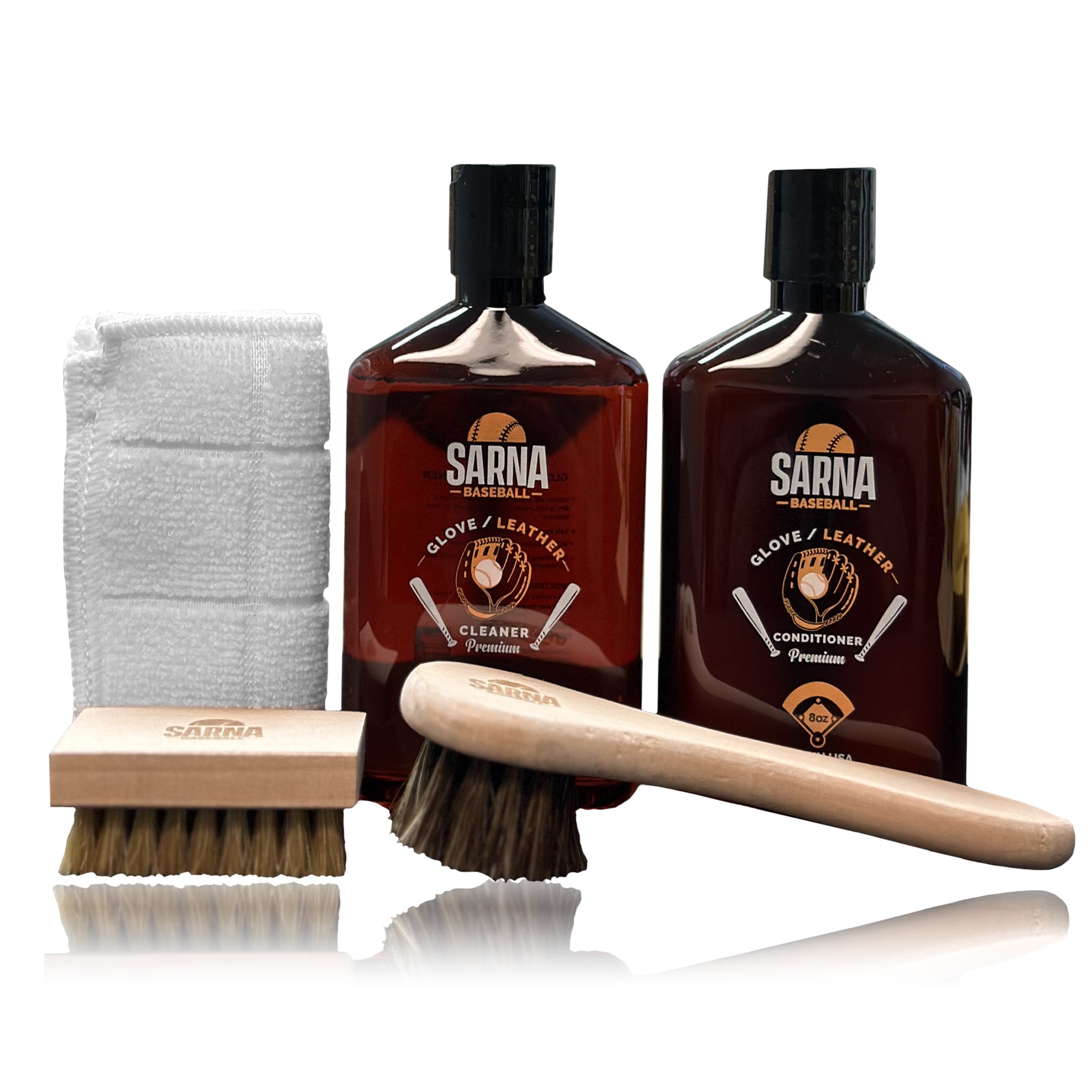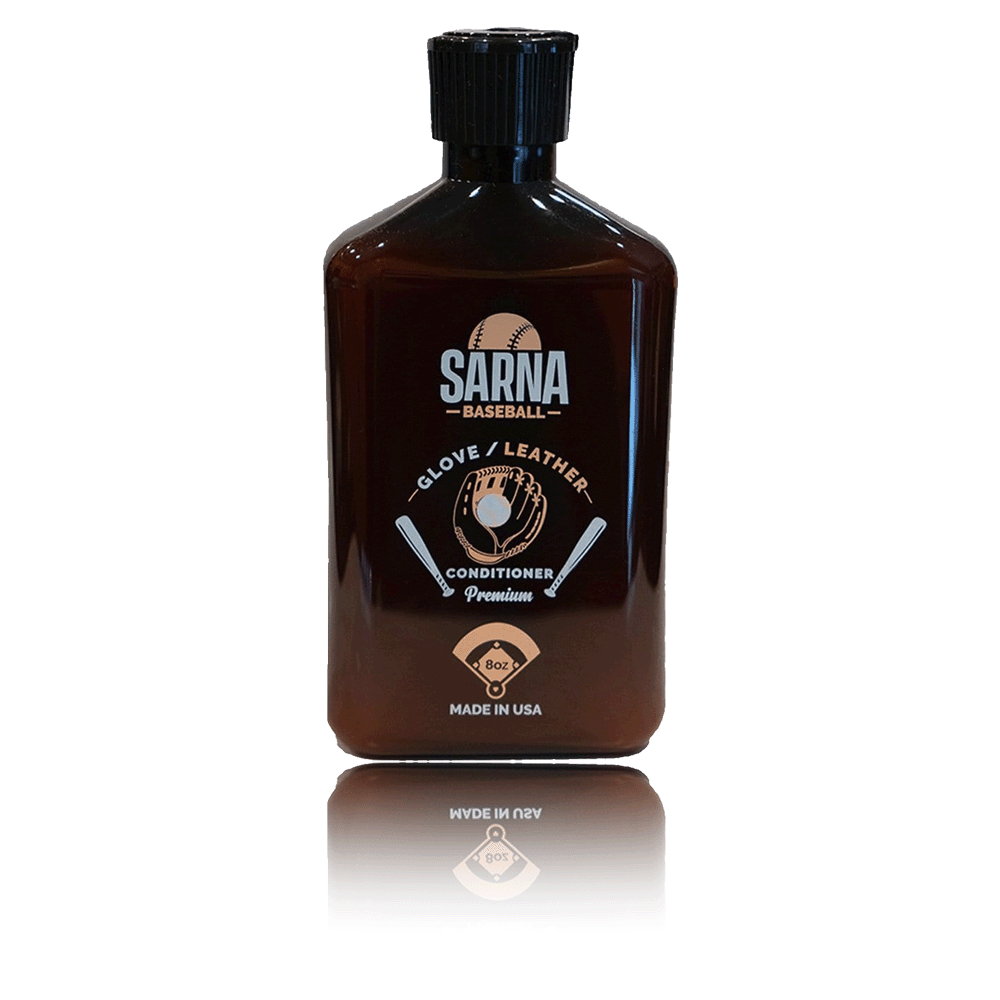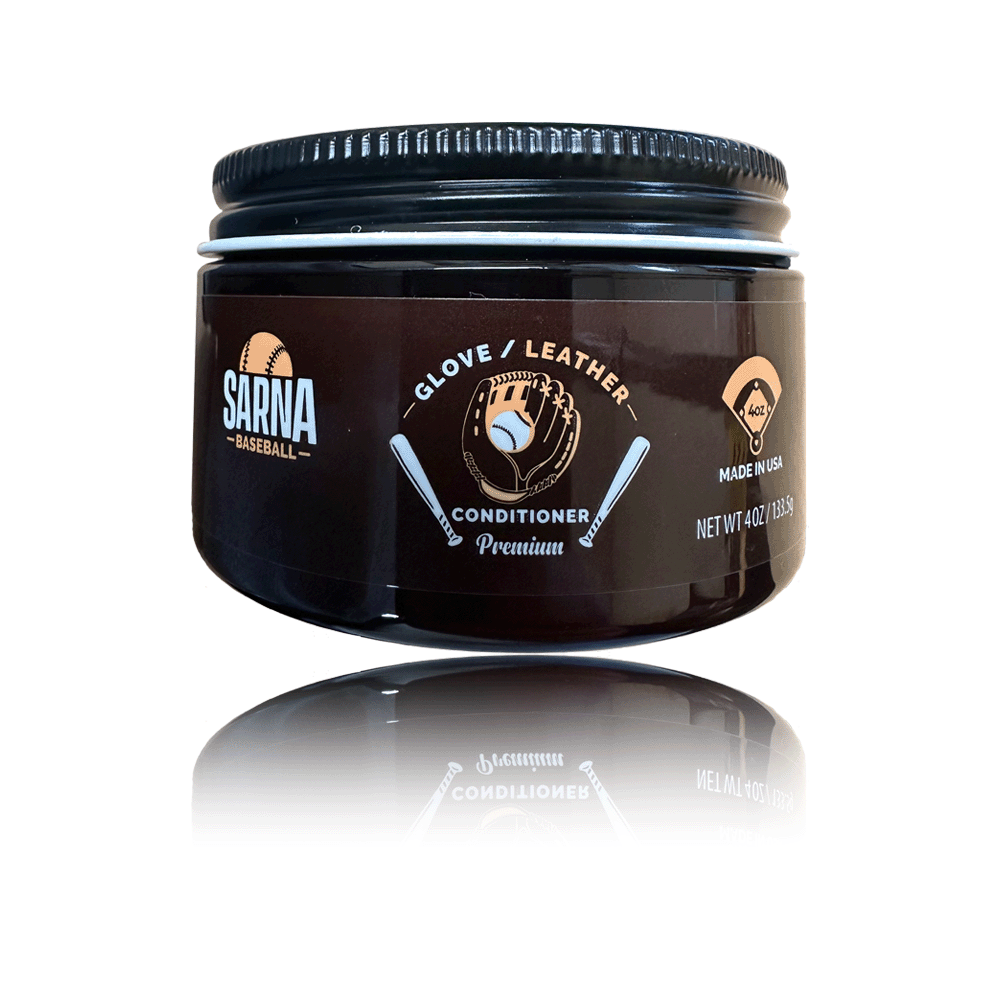A high-quality baseball and softball glove is one of the most important investments an athlete can make for their game.
While no glove alone can make you a better defender, choosing the right equipment for your play style and position can improve comfortability and confidence while on the field. Improved plays and consistency would be short to follow, allowing for better play overall.
This consistency comes with a hefty price, however, as many gloves cost hundreds of dollars. Even "budget" mitts can run somewhere between $150-$200 for decent leather. Because of this, players and parents alike should know how to properly take care of and maintain expensive equipment. One of the key aspects of this is breaking in your new glove.
But Why Do Baseball Gloves Need Breaking In?
One of the best qualities of leather is its resistance to wear and tear, and its overall durability. However, leather that has just come from the manufacturer is often stiff and hard to manipulate. Baseball and softball gloves fresh off of the line are no different.
If you've ever played catch with a brand new mitt, then you'll know exactly what we are speaking to. It feels relatively impossible to close the glove effectively, and the ball hits off of the leather like a rock.
Gloves made from real, genuine leather (such as cowhide or steerhide) need to be taken seriously and softened up. Depending on the grade of leather, this process could take days or weeks.
How to Begin to Break in a Ball Glove... Simply and Effectively
One simple, yet effective, note made by former professional ball players is this... only let your hand touch the inside of your glove. This would make sense, as leather is malleable and will eventually form to the player. You want this to be the case for only YOUR hand, and no one else's. You want your mitt to be an extensive of your arm and to be as comfortable as possible.
Before we get started on the break in, you'll want to decide how you choose to hold your glove (finger out, double index finger, etc). Once this is decided, we can get started on working out the leather.
What you'll need:
- A glove mallet.
- A 3-5 pound dumbbell/weight.
- A good quality glove conditioner such as Sarna Glove Cream.
Check out Ball Glove King's video to follow along with this simple process we like to follow:
First, grab your lightweight dumbbell and start on the heal of the glove (the entry point for your hand). This piece is often laced up with very stiff materials and has a thicker segment of leather from the manufacturer.
Begin hitting this seam with the end of your dumbbell in differing positions to begin loosening up the materials. Change up the bend and positioning in which you hit it, as this will allow optimal breaking in.
Once you feel that you've effectively loosened the heel, begin doing the same to the palm, pocket and back side of the glove.
You can now grab your mallet and begin doing what Chris describes as "rollovers". What you want to do here is smack the inside of the glove as your wearing it, as if you were catching a baseball/softball. As the mallet is making contact with the ball glove, close it, pressing it against the ground and rolling the glove closed. This can also work with a baseball if a mallet is unavailable.
You'll want to finish off this introductory softening by conditioning your glove. Grab your Sarna Conditioning Cream and begin working it into the leather. Keeping your glove moistened and conditioned is a very important step not only to the break in process... but also in maintaining your glove for years to come.
Other Notable and Supplementary Methods
Glove Wrapping
One of the more traditional methods of breaking a glove in is the concept of wrapping. While there are 2 schools of thought on the subject (with and without a ball), our recommendation is to ALWAYS use a ball in the pocket while wrapping.
The process of glove wrapping is an easy one:
- Close the glove with a ball in the pocket, ensuring that the thumb and pinky touch.
- Wrap the glove in string, elastic, rubber bands or anything else that will hold the leather in the wrapped position.
- Let it sit for a couple of days, and repeat the process if necessary.
Wrapping a glove in such a manner allows the leather to stretch and form to the ball in the pocket, promoting easier use and flexibility.
Glove Conditioners and Oils
Glove conditioners can be used before, during and after the break-in process. As mentioned earlier, glove conditioning is very important to not only the break-in process, but to maintenance as well.
The first rule of thumb is to never use standard household products as conditioners. These can be products such as Vaseline, petroleum jelly, chapstick, olive oil, etc. These can heavily damage the glove by either drying out the leather, or making it greasy and heavy.
We of course recommend using Sarna Baseball's conditioner and oil products.

When it comes to oils and conditioners, a little can go a long way. In general, start by adding a thin layer to the entire surface of the glove and rub it in with a soft cloth. Once the first application is done, continue adding small amounts as necessary.
The purpose of these products is to keep the glove's leather healthy and maintained. Using too much can lead to saturation, which will ruin your perfect break-in.
Do note that you will generally want to avoid conditioning the glove's webbing, as this is a thinner leather than the body and will break-in easily on it's own.
Methods to NOT Use to Break-in a Glove
Above, we listed off some methods to simply and effectively break-in your baseball or softball glove. Below are methods that you should absolutely NOT try under any circumstances.
Don't: Microwave or Bake It
Keep your glove out of the microwave and oven at all costs. While it's true that hot air makes leather softer and more supple... it also significantly dries out the material. Once it cools down, the dryness will lead to a more brittle and dry glove. This is the opposite effect we want.
Don't: Leave Your Glove in the Car
This is the same concept as the microwave and/or oven. Cars get hot and warm up easily in the sun... the heat will lead to dry, brittle leather.
You'll achieve the same result as the oven... a dried out glove that no amount of conditioning can fix.
Don't: Use Shaving Cream
One of the oldest and most traditional break-in methods was using Barbasol shaving cream as a conditioner. Back in the day, shaving cream contained lanolin, a natural oil that came from sheep.
Lanolin happens to be a very good conditioner (modern glove oils often contain it). However, modern shaving cream has since gotten rid of the lanolin formulas in place of harsh chemicals and artificial materials not designed for leathers.
As previously stated, dryness is the enemy of leather and ball gloves. So what happens when you cover your glove in shaving cream? Exactly. More dryness that leaves your glove in poor shape. Some creams also contain chemicals that can break down leather and weaken the fibers that make it so durable.
Frequently Asked Questions
Can you break-in a glove overnight?
Safely breaking in a ball glove takes time and consistency. Any method that claims to be breaking in the leather that quickly is probably wrong, or damaging to the glove overall.
Patience and consistent working of the leather is key here. Take your time and enjoy the process of working on your new glove.
Can you use shaving cream on your gloves?
As previously mentioned, shaving creams used contain lanolin, a natural conditioner. Modern formulas don't normally have this, but do contain,triethanolamine (an alcohol), isobutane (a gas product used in industrial manufacturing), sodium lauryl sulfate (a detergent), and propane. These harsher chemicals can dry out the leather and cause damage to your mitt.
Is heat bad for your glove?
Yes, overall, hot air can be considered detrimental to the health of your ball glove's leather. Any drying of the material can cause stiffness, brittleness and overall damage that leaves your glove susceptible to breakage and lack of ease of use.
Conclusion
There are many different methods players prefer to use to break-in their brand new baseball/softball gloves. Remember, these things take time and patience. Any promise of rushing through for instant break-ins are usually wrong or damaging.
Baseball glove oils and conditioners are a must have to keep your equipment in top shape. Not only is the break-in process important, but also the maintenance that comes after to ensure longevity of your mitt.









Leave a comment
All comments are moderated before being published.
This site is protected by hCaptcha and the hCaptcha Privacy Policy and Terms of Service apply.